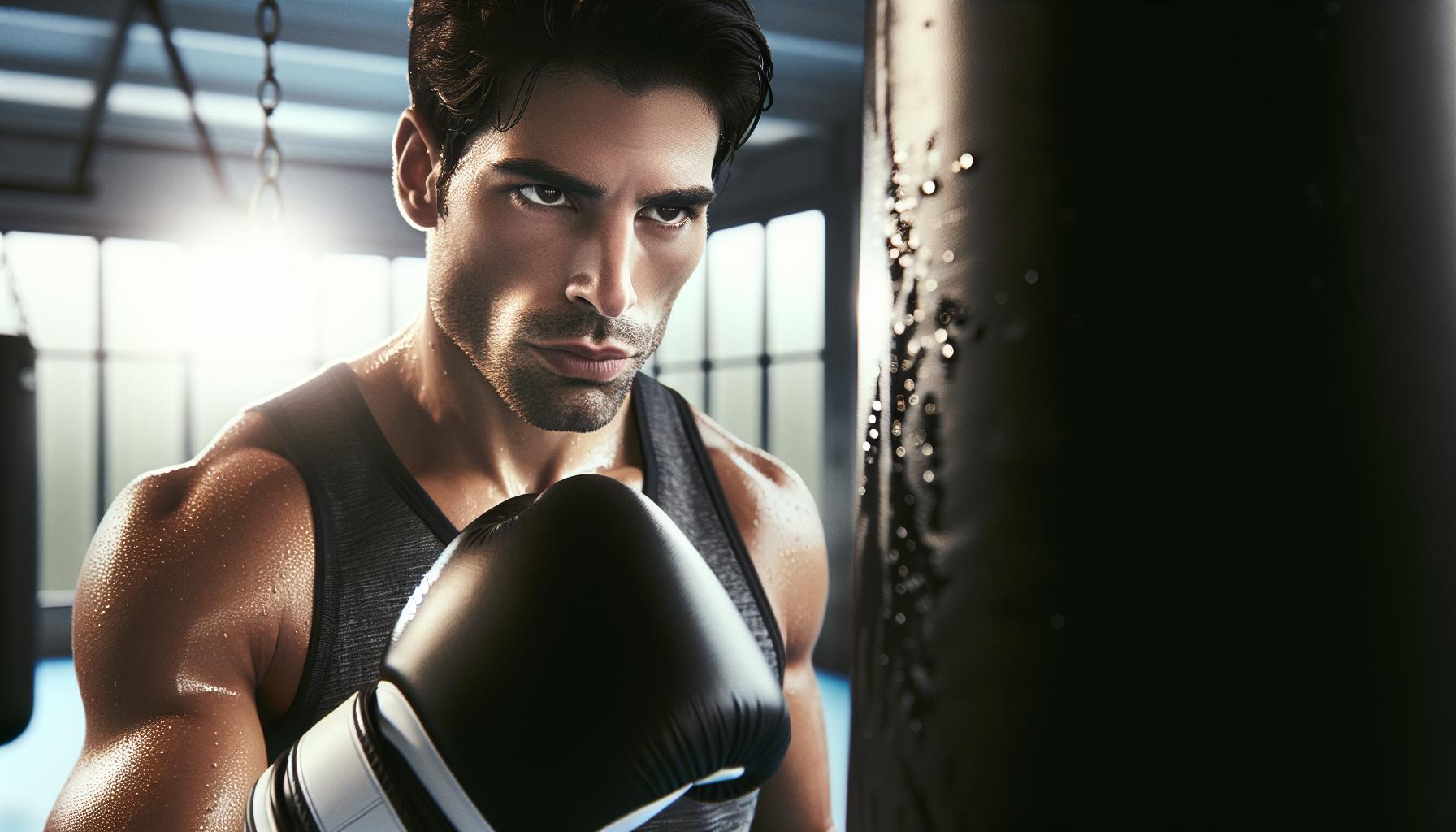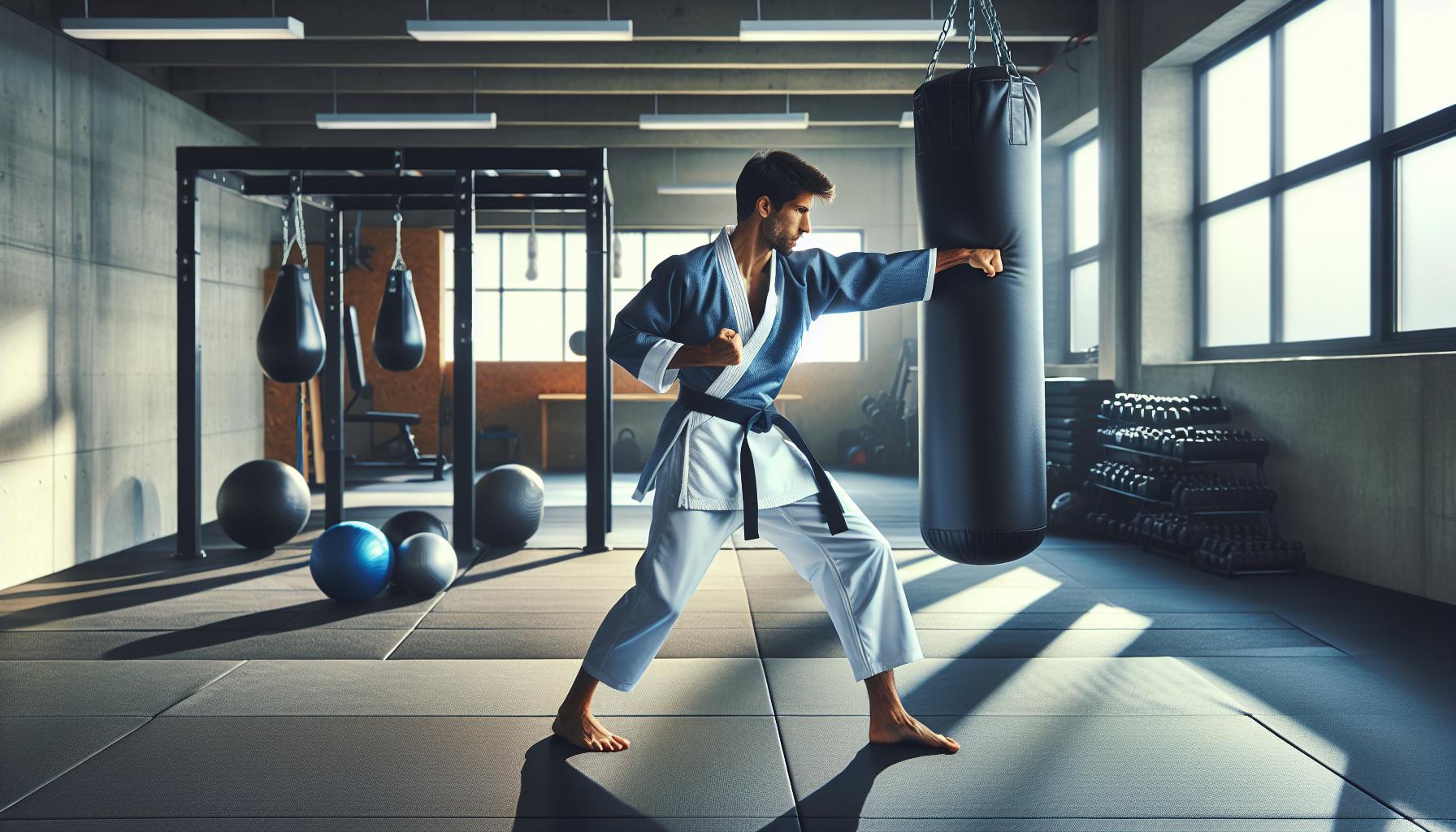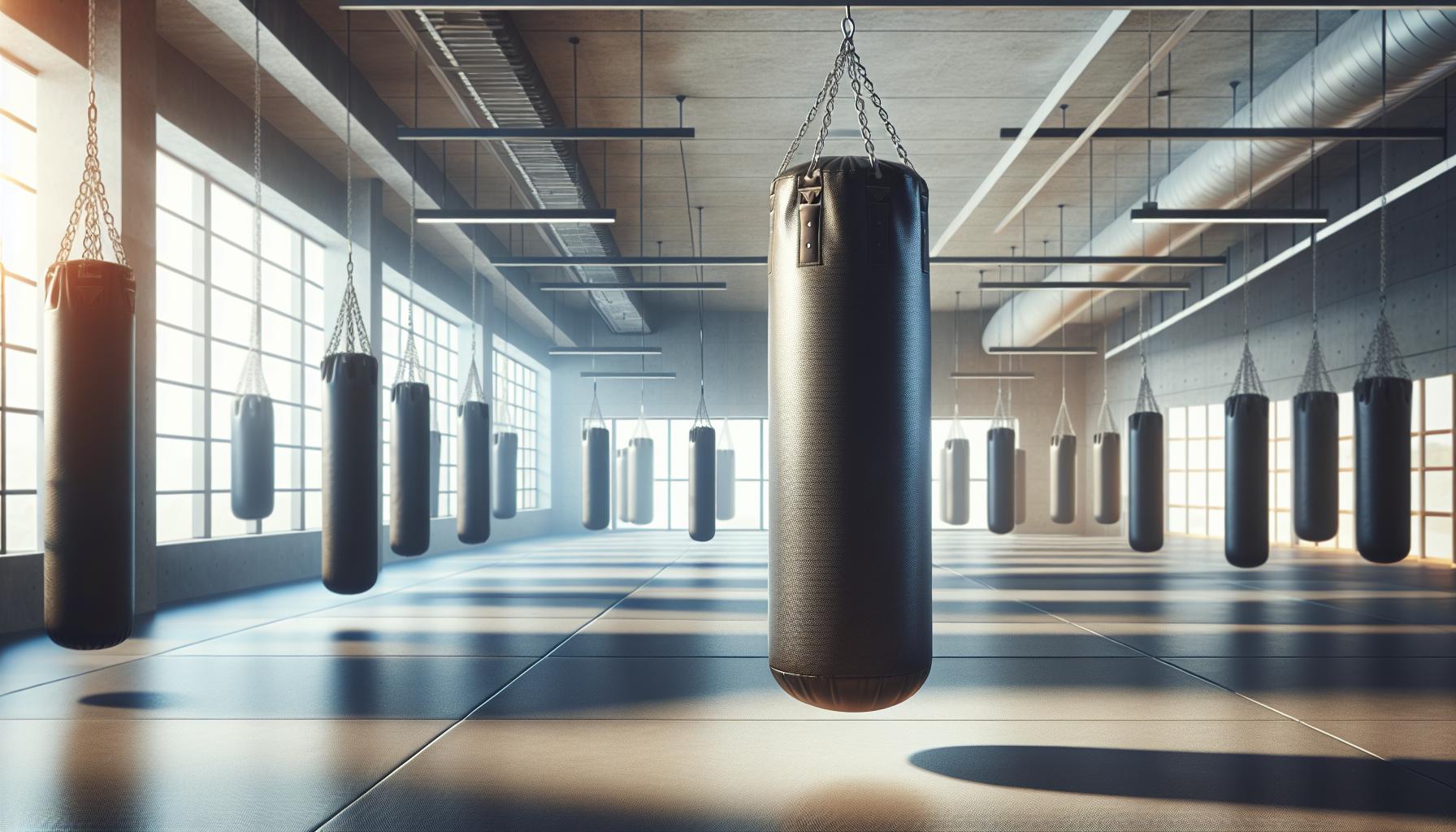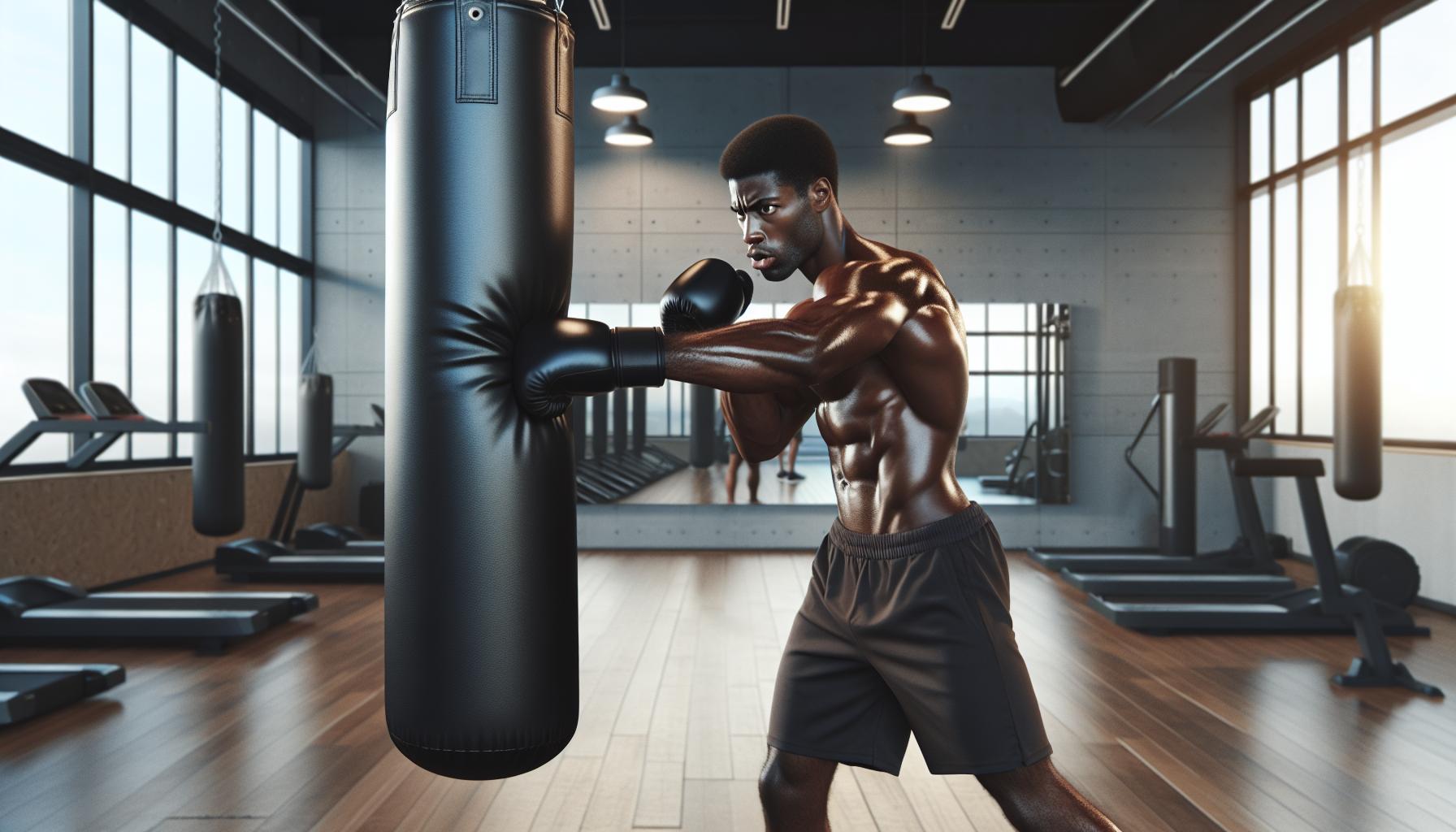When I first stepped into the world of martial arts, I quickly discovered the importance of proper training equipment. One piece that stood out was the punching bag. It’s not just a bag to hit; it’s a versatile tool that can enhance my technique, build strength, and improve my overall performance.
Using a punching bag has transformed my training routine, allowing me to unleash my energy while honing my skills. Whether I’m practicing my jabs or working on my kicks, it’s become an essential part of my journey. In this article, I’ll dive into the benefits of incorporating a martial arts punching bag into your training and how it can elevate your practice to new heights.
Key Takeaways
- Versatility of Punching Bags: Martial arts punching bags come in various types, including heavy bags, uppercut bags, and freestanding bags, each serving unique training purposes.
- Key Physical Benefits: Regular use of a punching bag enhances strength, cardiovascular fitness, coordination, and reflexes while also aiding in weight management and stress relief.
- Choosing the Right Bag: When selecting a punching bag, consider factors such as material, weight, size, and filling type to ensure it aligns with your training goals.
- Importance of Maintenance: Proper cleaning and regular inspection of your punching bag are essential to prolong its life and maintain optimal performance.
- Enhanced Mental Skills: Training with a punching bag improves focus, discipline, and self-confidence, making it a valuable tool for both physical and mental development.
- Recommended Brands: Consider well-known brands like Everlast, Ringside, and Century when choosing a punching bag to ensure quality and durability in your training equipment.
Overview Of Martial Arts Punching Bags
Martial arts punching bags play a crucial role in training, offering various benefits for technique and strength development. Understanding their types and key features helps me select the most suitable bag for my training needs.
Types Of Martial Arts Punching Bags
- Heavy Bags
Heavy bags weigh between 70 to 150 pounds. They provide resistance for both strikes and kicks, enhancing power and technique. - Banana Bags
Banana bags are elongated and designed for kickboxing and karate training. Their shape allows for effective low kicks and high strikes. - Uppercut Bags
Uppercut bags, often shaped like a cone, focus on upper and side punches. They sharpen precision and improve head movement. - Aerial Bags
Aerial bags hang from a swivel, allowing for dynamic movement. They’re perfect for practicing angles and elusive footwork. - Freestanding Bags
Freestanding bags have a base filled with water or sand. They allow flexibility in position and cater to various striking angles. - Speed Bags
Speed bags are small, lightweight bags that improve hand-eye coordination and rhythm. They’re ideal for speed and timing drills. - Material
Durable materials like leather or synthetic leather ensure longevity. Choosing a bag with high-quality fabric withstands repeated use. - Weight
Weight influences stability and the type of training. Heavier bags enhance strength training, while lighter bags improve speed. - Filling
Bag filling affects striking feel. Some bags use sand, fabric, or foam, each offering different rebound and resistance characteristics. - Size
Bag size affects usability. Smaller bags suit quick strikes, while larger bags accommodate more vigorous techniques and combined drills. - Attachment Type
Different attachment types, such as hanging or freestanding, contribute to versatility. I prefer hanging bags for traditional kickboxing workouts. - Price
Price varies greatly among bags. Investing in a higher-quality option typically pays off through durability and enhanced training performance.
Benefits Of Using A Martial Arts Punching Bag

Using a martial arts punching bag significantly enhances training routines. It supports both physical and mental development, making it an essential tool for practitioners.
Physical Health Benefits
- Strength Building: Engaging with a punching bag improves muscle strength through repetitive striking. It targets major muscle groups, including arms, shoulders, and core.
- Cardiovascular Fitness: Working out with a punching bag elevates heart rate. Regular sessions promote stamina and cardiovascular health, beneficial for overall fitness.
- Coordination and Balance: Maneuvering around a punching bag enhances coordination. Practicing footwork and strikes develops balance, which is vital in martial arts.
- Weight Management: Intense training with a punching bag supports weight loss. It helps burn calories and contributes to maintaining a healthy weight.
- Improved Reflexes: Striking a moving bag sharpens reflexes. Responding to its movement trains quick thinking and improves reaction time.
- Stress Relief: Hitting a punching bag releases built-up stress. The physical activity triggers the release of endorphins, promoting a sense of well-being.
- Improved Focus: Training with a punching bag cultivates concentration. Following a routine demands mental engagement, enhancing my focus in other areas of life.
- Boosted Confidence: Mastering techniques on a punching bag fosters self-confidence. Observing progress in skills and strength encourages a positive self-image.
- Discipline Development: Committing to regular practice with a punching bag instills discipline. Structured training sessions reinforce goal setting and consistency.
- Emotional Outlet: Practicing martial arts provides an outlet for emotions. Striking the bag can serve as a healthy way to channel feelings, reducing anxiety and frustration.
How To Choose The Right Martial Arts Punching Bag

Selecting the right martial arts punching bag enhances training effectiveness. Several factors and leading brands play a crucial role in making the right choice.
Factors To Consider
- Material: Opt for durable materials like leather or synthetic leather for longevity. Consider nylon or vinyl for budget-friendly options that still offer decent durability.
- Weight: Choose a bag that matches your training intensity. Lighter bags suit speed work, while heavier bags help build strength.
- Size: Select a bag height appropriate for your training style. Taller bags work well for kickboxing, while shorter bags can be ideal for traditional boxing.
- Filling: Pick the filling based on the type of strikes you plan to practice. Foam or fabric filling offers a softer impact, while sand or water filling provides more resistance.
- Attachment Type: Determine whether a hanging bag or freestanding bag fits your space and training needs. Hanging bags require adequate support, while freestanding options are portable.
- Price: Set a budget that balances quality and affordability. Higher-quality bags may cost more but often deliver improved performance and durability.
- Everlast: Known for robust construction, Everlast bags cater to all levels of martial artists. Their heavy bags often come with excellent warranty options.
- Ringside: Ringside offers a wide selection of bags, including specialized uppercut and speed bags, focusing on varied training needs and preferences.
- Century: Century’s freestanding bags provide flexibility and can fit various training environments. Their durability makes them a favorite among martial art enthusiasts.
- Outslayer: Outslayer bags are notable for their heavy-duty design, which withstands intense training sessions, appealing to serious practitioners.
- Aqua Training Bag: This innovative bag uses water as filling, offering adjustable weight while providing a softer impact on your hands and joints.
Make informed choices based on these factors and recommended brands to enhance your martial arts training experience.
Maintenance Tips For Martial Arts Punching Bags

Maintaining a martial arts punching bag ensures its longevity and optimal performance. Focus on cleaning, care, and addressing common issues to enhance your training experience.
Cleaning And Care
Cleaning a punching bag regularly keeps it sanitary and extends its life. Wipe down the surface with a damp cloth after each use to remove sweat and dirt. For a deeper clean, mix mild soap with water, apply it with a cloth, and rinse well. Allow the bag to air dry completely to prevent mold and mildew. Inspect the bag for signs of wear or damage, and address any issues promptly to maintain safety and functionality.
Repairing Common Issues
Repair common issues with your punching bag to avoid further damage. For minor tears, use heavy-duty fabric adhesive or patches, ensuring a secure bond. If the filling becomes uneven, redistribute or add more material to maintain shape and consistency. Check the straps and hooks for signs of wear; replace them at any signs of fraying. Fix leaks in inflatable bags by locating the breach and applying a suitable patch or repair kit. Regularly assessing the bag’s condition can prevent larger problems and ensure a safe training environment.
Conclusion
Investing in a martial arts punching bag has transformed my training experience. It’s more than just a striking tool; it’s a gateway to improving my technique and building strength. The right bag can elevate not only my physical abilities but also my mental resilience.
I’ve learned that selecting the right type and maintaining it properly is crucial for maximizing its benefits. Whether I’m using a heavy bag for power or a speed bag for coordination, each session offers unique advantages.
Incorporating a punching bag into my routine has been a game changer for my martial arts journey. I encourage anyone serious about their practice to consider adding one to their training arsenal.

